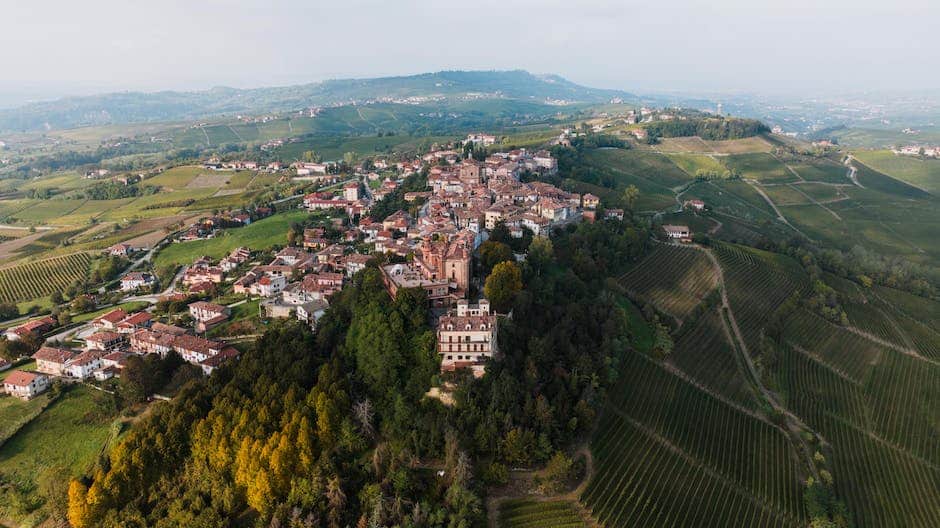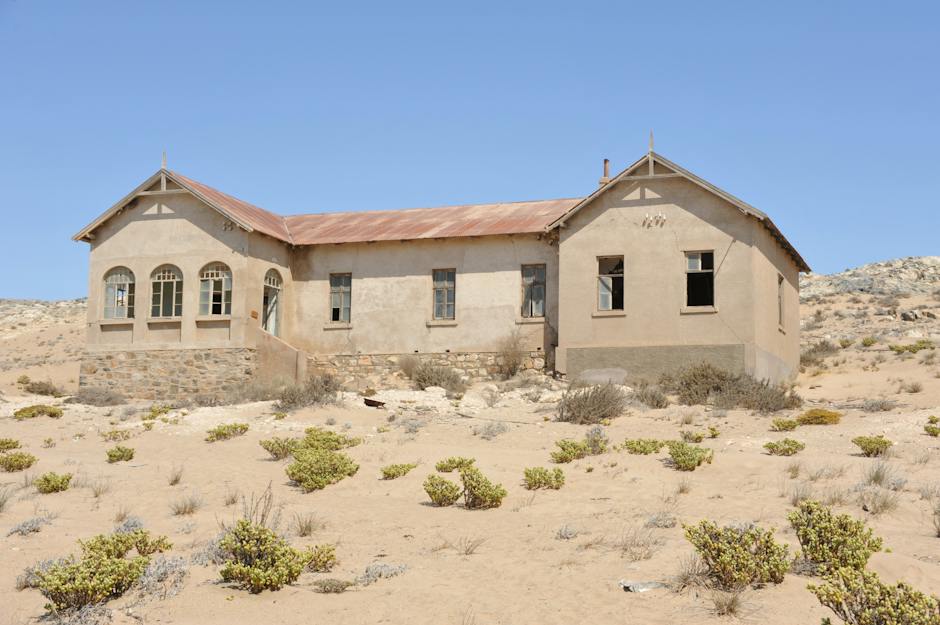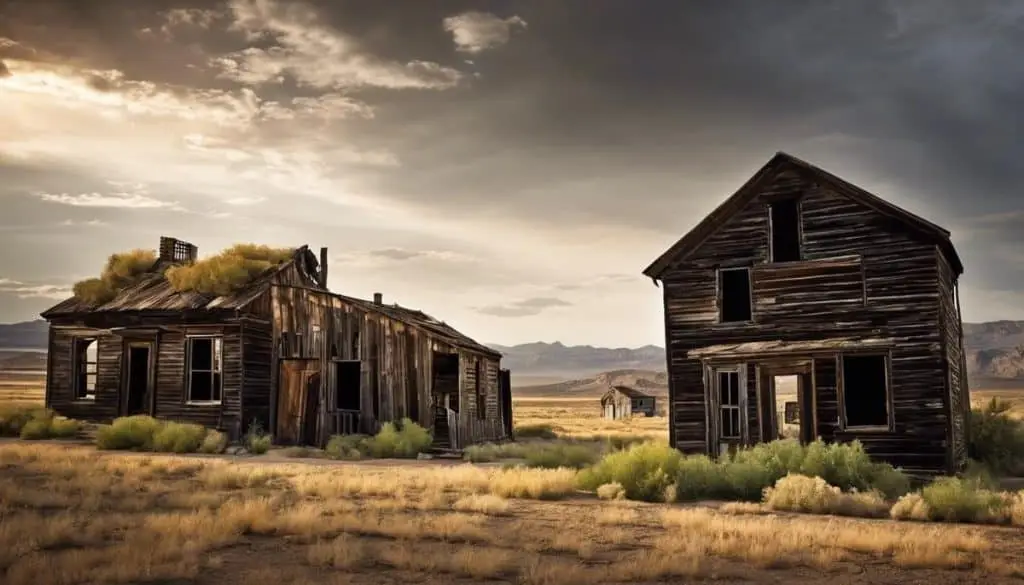America’s Ghost Towns History: America’s vast history is intricately woven with stories of prosperity, decline, and resurgence. Entwined within the narrative of our nation’s development are the stories of towns that rose to prominence, reflecting the spirit of various eras, such as the Gold Rush, only to later be abandoned and forgotten. These ghost towns, standing in stark contrast to the urbanization around them, bear silent witness to the changing tides of human migration and economic shifts. We journey together now, probing the overlooked corners of history, to the most notorious ghost towns across the United States. Gathering tales from historical records, personal accounts, and archaeological findings, we will delve into the compelling stories that painted these towns into being.
History Behind US Ghost Towns
Step right into the past and get ready to uncover the charming narratives behind America’s ghost towns. Every abandoned building whispers tales of bygone eras, while the wind hums familiar tunes through deserted streets – a powerful testament to a nation’s remarkable history.
Stroll through the ghost town of Bodie, California, a preserved wonder from the rush for gold, and one can almost hear the rattle of mining tools echoing through the silent hills. Named after Waterman S. Body, who discovered gold in the hills nearby in 1859, Bodie had a bustling population of around 7,000 in its heyday. With prosperous mining operations yielding loads of precious metal, the ‘sea of sin’ was notorious for its lawlessness, red-light district, and the infamous ‘Bad man from Bodie’. But alas, post 1880, mining operations dwindled along with Bodie’s glory, leaving it deserted and frozen in time.
At one point in the late 19th-century, Thurmond, West Virginia was a prosperous hub, teeming with coal miners and workers of the Chesapeake & Ohio Railway. It boasted a grand hotel, a bank that scored high in deposits statewide, and even popularity as a resort destination for adventurers riding the white rapids. But as diesel engines began replacing steam locomotives, the need for coal and subsequent station stops in Thurmond dwindled. By 1960, passenger services were altogether terminated, slowly chipping away at the town’s life force until it became a haunting whisper of its once prosperous past.
On the windswept prairies of South Dakota sits the spectral premise of Scenic town. What was once a quintessential wild west settlement—complete with saloons, dance halls, and the rogue cowboys—now stands eerily silent, a solemn reminder of America’s pioneer history. Changing economic circumstances and the harsh Dakota weather led to Scenic’s progressive decline. However, it retains an enchanting aura that bears testimony to the unforgiving realities of a westward expansion that pushed America’s frontiers.
Over in the Pacific Northwest, nestled by the Columbia River in Washington, lies the melancholic remains of Grafton. Here, nature’s retaking of man-made structures is a sight to behold. Established as a farming community during the Civil War era, Grafton’s decline began during World War I, when many residents left to either join the military or pursue employment in larger cities. As the youth left, Grafton’s atmospheric embodiment of resilience originated from an era when America itself was finding its feet.
Cherishing these beautiful yet melancholic abandoned landscapes require understanding the history within their creations and eventual collapses. It’s a fascinating tale of human ambition, conquest, survival, and inevitability of change—a journey through various lifelines of America’s development, right from the promise of gold to the allure of the wild west, to the rise and fall of the coal industry, casting an enticing spell on those who chance a visit. Their haunting allure, frozen in time, continues to fascinate and captivate the hearts of history enthusiasts and explorers alike.

Most Notorious US Ghost Towns
Delving further into the eerie allure of America’s ghost towns, we discover even more captivating locations suspended in time: St. Elmo, Colorado; Kennecott, Alaska; and Cahawba, Alabama. Each vibrant in history and mystery, they stand out for their unique origins, their rise and fall, and the haunting beauty they radiate today.
Branching out into Colorado’s Rocky Mountains, the wooden frontier town of St. Elmo truly speaks to the wild core of the American West. Established in 1880 during the gold and silver rushes, it soon offered miners not just work, but a vivacious social life with its saloons, dance halls, and even a telegraph office – a bustling town center in the heart of the wilderness. As mining dwindled, however, so did the town’s population, eventually leaving St. Elmo deserted by the 1950s. Whispers of the past can still be heard today, as the original wood-paneled buildings stand resilient against the test of time, making St. Elmo a popular destination for history buffs and thrill-seekers alike.
Transitioning from the wild west to the far reaches of the Alaskan wilderness, Kennecott captures the imaginations of many with its unique tale. Known predominantly for its abundant copper deposits, Kennecott was the manifestation of industrial progress in the 20th century. By 1916, this remote settlement had developed into a model of modern enterprise, complete with its own hospital and recreation hall. However, like with many resource-based towns, the prosperity was fleeting. The mines became tapped out, and following a mass exodus in the 1930s, Kennecott was finally deserted. With well-preserved buildings against a majestic backdrop of glaciers and mountains, Kennecott intrigues many with its surreal beauty and the stark contrast of industrialism against raw nature.
Last, but certainly not least, is the Southern charm of Old Cahawba, Alabama. Ordained state capital in 1820, Cahawba thrived due to its riverfront location, facilitating trade and transport. The town was a buzzing confluence of European, African, and Native American cultures with a vibrant river port and bustling cotton industry. After losing its status as the state capital in 1826 and later facing massive flood damage, the once-prosperous Cahawba faced a steady decline, which was eventually accelerated by the Civil War. Yet, not all was lost. Relics of its rich multicultural heritage still stand today, with remnants of historic structures and various cemeteries, rendering Old Cahawba an archaeological treasure trove.
Each ghost town, steeped in the epochs of history, presents a timeless tableau of America’s past – be it the gold rush, the onset of industrialism, or the mishmash of cultures. Much like an open history book, these ghost towns stand as stark reminders of the ephemeral nature of prosperity, carrying echoes of past lives and times now forgotten. Be it thrill-seekers, history enthusiasts, or lovers of the elusive, these towns provide a canvas to paint one’s imagination wild, serving as chapters of a narrative woven into America’s diverse tapestry.

Visiting Ghost Towns- A Hobbyist’s Guide
As one delves into the thrilling pursuit of exploring America’s deserted towns, embarking on this personal historical tour de force is like stepping back in time. How does one undertake this endeavor, while preserving the ephemeral beauty of these ghost towns and remaining respectful of their history?
The first step to appreciate these ghost towns is to consider the basics of planning and preparedness. Embracing the unpredictable journey in these deserted cities mandates a fair amount of research prior, ensuring you’re aware of the access points, local regulations, and any potential hazards. As a responsible explorer, it’s vital not only to stay safe but also to maintain the integrity of these remarkable sites. Leaving no trace should be more than just a motto, but a way of life when engaging with this unique form of historical exploration. We tread lightly in these towns, for the echoes of the past still whisper in the wind.
Engagement in educating oneself about the history of the towns before venturing into them allows for a more profound, context-rich experience. Witnessing decaying structures is one thing, but understanding that each crack and crevice tells an engrossing tale from the era gone by is an entirely different sensation. So, while visiting towns like Animas Forks in Colorado or the remains of mining industry peaked Pyramiden in Arctic Norway, a well-informed mind paves way to a deep appreciation of their standing in history.
Photography is another extraordinary tool for preserving and sharing the ephemeral beauty of these ghost towns. With care and respect, hobbyists can capture the haunting beauty of towns such as Oradour-sur-Glane, an effectively-preserved testament to wartime atrocities, and Chernobyl, testament to a nuclear disaster in Ukraine. Hauntingly picturesque, each photograph encapsulates an unwritten narrative of human resilience and the ephemerality of achievement.
While basking in shadowed echoes of vibrant industries and thriving communities prove to be intriguing, the focus should always be towards celebrating life. It’s crucial to remember – these eerie remnants of yesteryears are not mere amusement parks; rather, they are stirring memorials to the lives lived and lost, to dreams realized and shattered.
Fundamentally, ghost town exploration, as a hobby, goes beyond mere thrill and adventure. It is a deep dive into the historical richness that whispers tales of glory and doom. It forms a bond with the transient nature of human accomplishments and provokes thought on the ephemerality of life. As history whispers, time stands a spectator to the rise and fall of civilizations. And as explorers, we are but guests, given a privilege to witness this splendid theater of life and ruins. Embrace it with respect, preserve with love, and pass down the tales – making sure the ghost towns never turn completely ghostly even in memories and echoes.

Whether you are intrigued by the haunting charm of deserted settlements, gripped by the thrill of unearthing hidden stories, or attracted by the promise of a unique adventure, America’s ghost towns hold an irresistible allure. Our exploration of these once bustling towns, now eerily silent, paints an evocative tableau of human endeavor, endurance, and audacity. These crumbling ruins, stand today as poignant reminders of history, beckoning us to remember, respect, and preserve their stories. And for those with an insatiable curiosity and the heart of an adventurer, the thrill of exploring these ghost towns across America is an experience that is as enriching as it is exciting. So, the next time you find yourself seeking a break from bustling city life, turn the page, embark on this historic odyssey, and let the whispered tales of forgotten towns reignite your sense of discovery.
Steve is the creative force behind My Unique Tales, a blog dedicated to sharing captivating stories that explore the human experience in all its complexity. With a passion for writing and a talent for crafting engaging narratives, Steve's blog is a treasure trove of imaginative tales that transport readers to other worlds and challenge them to see things from new perspectives. From epic adventures to intimate character studies, Steve's stories are always thought-provoking and emotionally resonant. With a growing following of readers who appreciate his unique voice and creative vision, Steve is quickly becoming a rising star in the world of online storytelling.






